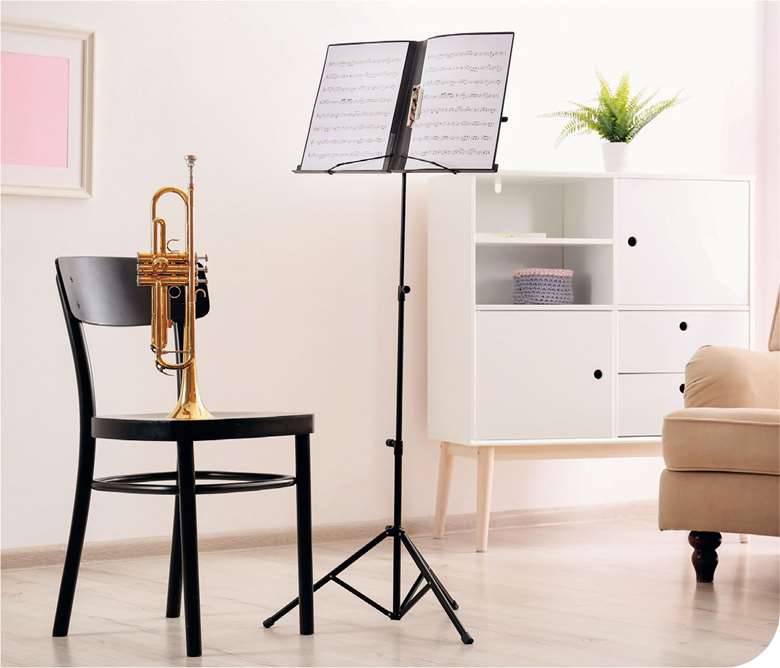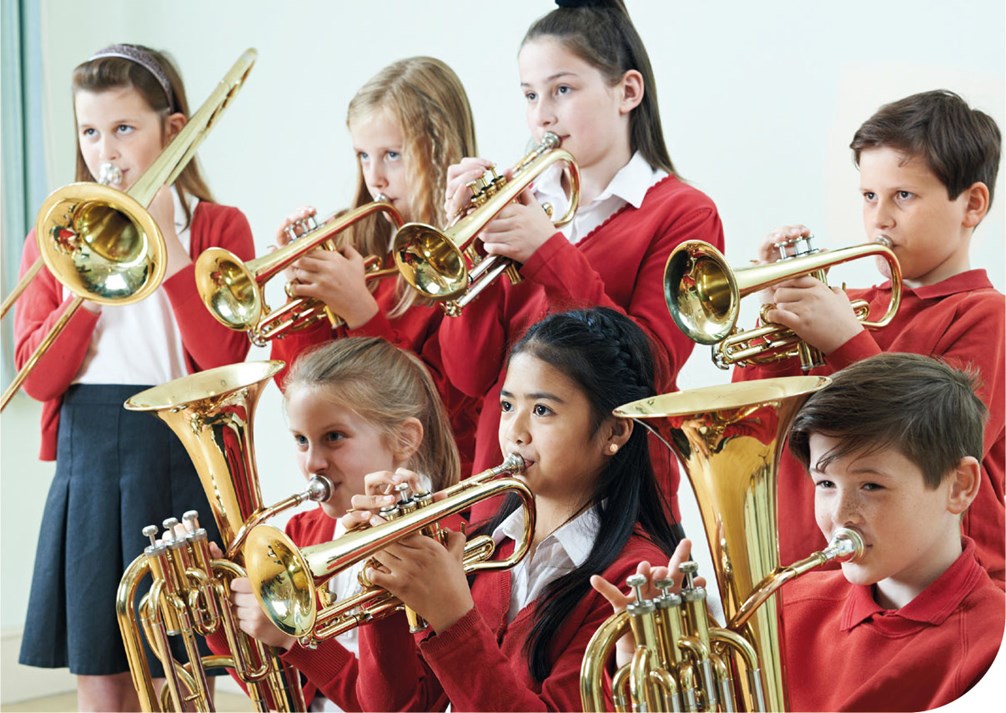Brass teacher's diary: Virtual teaching
Kevin Street
Tuesday, December 1, 2020
Kevin Street, assistant director of music at Dulwich Prep London, reflects on the pros and cons of virtual teaching, and on the way forward.

New Africa/Adobe Stock
When I heard that my school, Dulwich Prep London, was going to close after Easter with no date scheduled for re-opening, I initially baulked at the idea of online teaching, although colleagues, friends and parents were encouraging me to broaden my horizons and embrace the technology.
Having taught individual brass lessons for over 40 years, I had to rethink some of my tried and tested methodology. Just the idea of a pupil seeing and hearing their teacher on a very small screen (sometimes a smartphone) with variable network quality, in their own house, diminished the whole relationship of gentle authority that I have always relied on in the lesson room in school. If I still wanted results, I realised they'd now have to see me slightly differently. The familial and pastoral side of my approach had to be the dominant characteristic. For safeguarding, I insisted that a parent or guardian was present or closely at hand during the lesson, and that also inevitably changed the dynamic of the teacher/pupil relationship.
Problem Solving
The biggest challenge for me was solving the problem of how to teach without the use of my own piano accompaniment, which I had come to rely on as a constant working tool. The internet delay meant that this was simply no longer possible. I realised that I was using the piano more as a metronomic device, so I had to teach the pupil how to ‘own’ a sense of rhythm and tempo for themselves. So I went back to rhythmic basics and used my old favourite publication – Improve your sight-reading (Trumpet) – by John Davies and Paul Harris. I have always used this book for exam sight reading preparation, but now I realised I could use the methodology for teaching every piece they played. The clap and ‘tah’ method (clapping the pulse while ‘tah-ing’ the tune) became the rhythmic foundation for every piece and enabled the pupil to problem solve and self-analyse their own reading of rhythm. Incidentally, I prefer to ask my brass pupils to say ‘tah’ rather than ‘lah’ as it reinforces good tonguing practice.
There is no doubt that ‘I play and you copy me’ still works in on-line lessons but the technology introduces an extra layer of challenge, especially with variable sound quality over the network. When the pupil struggled to copy, I found that it was much harder to help with problem solving. It wasn't acceptable to just repeat, ‘I can play so now you copy’, there has to be another step in between. The rhythmic breakdown of their work was a breakthrough for me as my pupils could now problem solve on their own with a little prompting.
Virtual Empowerment
My pupils were operating much more in their own world - they couldn't hear me giving them any pointers while they were playing and they couldn't therefore react in the moment. I now had to wait until the end of the piece to give them advice, by which time they had soldiered on, sometimes repeating mistakes, which led them down blind alleys. So I had to unpick and analyse their playing much more than I would normally do. However, this ‘after the playing’ analysis had some good side e?ects. I found that I was getting my pupils to talk much more about their own performances, with constructive self-assessment and rating. During these chats I discovered how their music vocabulary needed to be improved, which gave us something to work on. I always encouraged them to think that ‘the more you know the more you will feel in control’, and from this basis their theoretical knowledge started to improve.

‘The reality of this “new normal” is that live performance must and will return’ (Image: Highwaystarz/Adobe Stock)
I realised that in face-to-face lessons we had often gone headlong into the holy grail pursuit of practical progress without reflection. Priority had reasonably been on improvement in sound, range and technique above everything else. Now that we had time to pause and reflect, I could ask them to describe marking points in the music, note names, values and expressions. As a result, their ownership of the music went up another step.
Some lovely light-hearted moments occurred during these chats. One of my pupils asked why he should make the effort to play the theme from the Unfinished Symphony if the composer couldn't even be bothered to finish it first!
Additionally, the input of more theory at an earlier stage became helpful, with the basics of key and time signatures being subjects of detailed discussion. These ‘trumpet down’ moments helped to break the intensity of the practical work. When playing, my pupils were often sideways to the screen so that I could see their fingering, but theory and chat time allowed me to see their faces and check how they were feeling. ‘Reading the room’ is much harder when you're teaching ten miles apart! Sometimes having the family dog enter the lesson room eased some frustrations and helped get round some tricky obstacles in the music.
Of course, it was no longer possible to write in practice diaries or pencil mark their music. Now they had to do this themselves, which for a seven-year-old student is quite a challenge. But this had the advantage again of ‘ownership’ – they now had to take responsibility for their own practice and understand more about the music markings than before.
Then we had the challenge of fixing a sticky valve or extracting a stuck mouthpiece. We've had a couple of hilarious teaching-by-remote-control, ‘Houston we have a problem’ moments where I was passing on instructions to a very willing parent out ‘in space’, trying to put the valves back in their correct places to ensure a safe landing back to earth! There is actually a significant benefit in engaging the parents in the nuts and bolts of brass playing and helping them understand the science behind their child's progress and success.
Face-To-Face Again
The good news is that at the time of writing we are now back in school and it feels great (despite the masks, gels and social distancing). I can now see more of the pupil than just their head and shoulders and we can get back to talking about breathing, posture, projection and tone, which I now realise I had missed on screen.
So yes, this is good news – so far. But a very big piece is missing. There are huge limitations in getting groups or ensembles together in the same room. Year group bubbles are solving the problem to some degree. Normally, in the school where I teach, I would have been inviting and encouraging pupils to join a wide array of multi-age bands and groups, which is really the whole point of learning a single line instrument. The ambition to progress through groups gives so much impetus to improve, and those magical performances to family and friends are currently missing. Also, the re-generation process has stalled as older pupils don't get the chance to demonstrate the joy of performance to younger ones and the younger ones don't have the chance to imagine themselves in the shoes of those older players. However, these ensembles are creating valuable placeholders for when the full programme can return at the earliest possible opportunity.
Even more concerning, and something that I have seen happening, is the fact that it is getting much harder to encourage brass pupils to take up trombones, horns, euphoniums and tubas. Without the ensembles to showcase them, pupils and parents may be drawn to what they might consider to be the more ‘social’ and ‘convenient’ instruments.
Looking Forward
We have always run an annual ‘taster’ session to invite new pupils to take up instruments, in which the pupils and their parents have the opportunity to see the full range of instruments on offer and to meet the visiting music teachers (VMTs). Equally, the VMTs could assess new pupils for suitability and instrument matching. We have now produced some taster videos, which will replace these face-to-face sessions and which can be used every year from now on.
My pupils have done really well during lockdown and have demonstrated some new and improved skills, especially with independent learning and resilience. They've come back to school liberated, with a spring in their step and I feel that we've come through something together as teacher and pupil.
The whole pandemic crisis has made us all sit up and think about the huge value of music to the enrichment of our lives. The reality of this ‘new normal’ is that live performance must and will return and we must insist that all our young music pupils will be performing in live settings to exuberant audiences some time very soon. VMTs across the country in all settings have battled through the challenges to ensure that this will happen and many thanks should go to all of them for their sterling efforts in keeping music alive.

